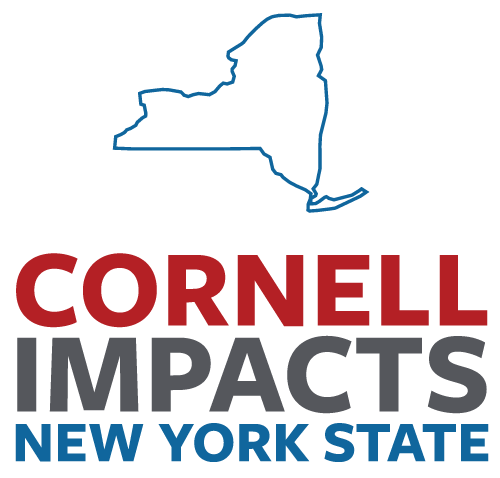A new citizen science program aims to collect widespread data about animal populations throughout New York state and is seeking volunteers to set up trail cameras to aid in the effort.
The data can be used to inform decisions about how to best manage or conserve wildlife in the state. The highest-priority animals include black bear, bobcats, white-tailed deer and fisher. Photos from all other mammal and bird species, including wild turkeys, will be used as well.
"We're expanding into areas that have never been monitored like this before," said Joelee Tooley, citizen science coordinator for the program and a research support specialist in the Department of Natural Resources and the Environment in the College of Agriculture and Life Sciences (CALS). "Eventually, we'd like to have thousands of cameras, which will give us a lot of statistical power to detect changes in population trends over time."
The program, Snapshot NY, is part of a larger collaboration between the New York State Department of Environmental Conservation (NYSDEC) and Cornell researchers aimed at co-conducting research to meet the state's needs. The team has divvied the state into approximately 4,500 grid cells of 30 square kilometers and hopes to put a camera in as many as possible - but many of those cells are on private land.
This is where residents can really help, said Tooley. "It's a great opportunity to be more involved as a citizen, by providing data that aids in the kind of decision process that the state makes to manage wildlife," she said.
Volunteers can use their own trail cameras or borrow one through Cornell. When the cameras detect the change in heat signature of a passing animal, they snap a photo. Volunteers can then periodically upload the photos to the new Snapshot NY website.
Tooley said that for those who already hunt, trap and use trail cameras, it's a simple additional step that will help the state manage species, which, in turn, benefits hunters and trappers. It's also an opportunity for anyone, regardless of interest in hunting, to participate in data collection around management and conservation and to better understand the often unseen wildlife in their backyards.
"A lot of these mammals can be super elusive, and we might not even know they're there," Tooley said. "So, it's fun to see that hidden world on camera, and to get a glimpse into the secret lives of mammals."
Volunteers will also receive small gifts of appreciation and invitations to special events to connect with other participants.
The project is led by Angela Fuller, professor in the Department of Natural Resources and the Environment (CALS) and leader of the U.S. Geological Survey New York Cooperative Fish and Wildlife Research Unit. Previous research from Fuller and her team estimated the number of cameras and sites needed to glean significant insights into animal abundance and distribution.
"We realized that reaching our statistical power target would require far more cameras than the NYSDEC could deploy alone," Fuller said. "That's when we saw a natural opportunity to involve citizen scientists."
Tooley expects the project will be longstanding and that it will help determine wildlife population trends. A similar project in Wisconsin has been ongoing for 10 years and has yielded incredibly valuable data, she said. Summaries of Snapshot NY data will eventually be available to the public at the county level.
"It's really important, now more than ever, for the public to understand why we study these species and why it's so important that we have programs like this to manage them effectively," Tooley said. "The more we learn about wildlife populations and their habitats, the better equipped we are to manage and conserve them into the future."







